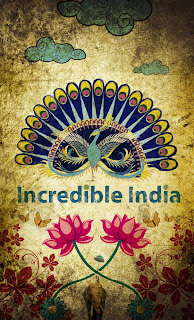ITDC came into existence in October
1966 and has been the prime mover in the progressive development, promotion and
expansion of tourism in the country.
Objectives- To construct, take over and manage existing hotels and market hotels, Beach Resorts,Travellers’ Lodges/Restaurants
- To provide transport, entertainment, shopping and conventional services;
- To produce, distribute, tourist publicity material;
- To render consultancy-cum-managerial services in India and abroad;
- To carry on the business as Full-Fledged Money Changers (FFMC), restricted money changers etc; and
- To provide innovating, dependable and value for money solutions to the needs of tourism development and engineering industry including providing consultancy and project implementation.

The authorised capital of the
Corporation is Rs 75 crores and the paid up capital as on 31.3.2005 was Rs
67.52 crores. 89.9748% of the paid up equity capital of the Corporation
is held in the name of President of India.The Corporation is running hotels,
restaurants at various places for tourists, besides providing transport
facilities. In addition, the Corporation is engaged in production,
distribution and sale of tourist publicity literature and providing
entertainment and duty free shopping facilities to the tourists. The
Corporation has diversified into new avenues/innovative services like
Full-Fledged Money Changer (FFMC) services, engineering related consultancy
services etc. The Ashok Institute of Hospitality & Tourism Management of
the Corporation imparts training and education in the field of tourism and
hospitality.
Presently, ITDC has a network of eight Ashok Group of Hotels, six Joint Venture Hotels, 2 Restaurants (including one Airport Restaurant), 12 Transport Units, one Tourist Service Station, 37 Duty Free Shops at International as well as Domestic Customs Airports, one Tax Free outlet and two Sound & Light Shows.
Aims
- Main aims of the Department of Tourism are as follows :-
- To do proper publicity about such places which, because of their historical importance, may attract tourists.
- To maintain the historical, religious and cultural traditions of india and to promote them.
- To provide cheap, clean and satisfactory facilities to tourists in matters of transport, accommodation, food and recreation.
- To get factual and informative literature printed which highlight tourist spots and monuments, their cultural importance and other details, and make such literature available to tourists which will serve as a guide and provide necessary information to them in order to help them to explore India.
- To enhance and encourage the participation of the private sector in efforts of the Government for providing necessary facilities to domestic and international tourists.
- To organize cultural shows on occasion of different fairs festivals and seminars with a view to attracting more and more tourists.






